
Salty Sam’s Fun Blog for Children
Number 474
Richard and John
Hello Everyone

Spring is on its way, the days are getting longer and when the weather is warmer you will be able to get outside more to play.
Do you ever play knights and maidens or being Robin Hood?
Do you ever see cartoons about Robin Hood where King Richard is the good guy and his brother King John is the bad guy?
Richard is thought of as a heroic warrior, whereas John was thought of as a mean and greedy collector of taxes.
Well, the truth about the two brothers was not quite that black and white.
Robin Hood is of course a character of fiction based on one or two people who did actually exist – see Blog Post 168.
King Richard and King John were real people though. They were both Plantagenet kings. Plantagenet was the family name of a dynasty of monarchs who ruled England in mediaeval times for over 300 years.
They took their name from a plant called a flowering broom (Planta genista).
There were other royal family names too through history. You may have also heard of the Tudors and the Stuarts but maybe not the Hanoverians? The royal family today are known as the Windsors.
Anyway…
King Richard, or Richard l, was a hero of history. He was a warrior king who went to fight in the Crusades in the Holy Land. He is also known as Richard the Lionheart because he fought so bravely in battle.
He is thought of as a kind, chivalrous knight who even forgave the man who fired the arrow that killed him while he was fighting in France on 6th April 1199, so the story goes.
Richard was born in Beaumont Palace in Oxford on 8th September 1157. He was the third of the five sons of Henry ll and Eleanor of Aquitaine.
He came to the throne 2nd September 1189 and married Berengaria of Navarre in Cyprus in 12th May 1191. Navarre was a kingdom in the north of Spain.
He was tall, powerful, athletic, well-educated, musical and highly-skilled in martial arts. Although he was a third son, he became king because his elder brother Henry died in 1183.
He only spent 7 months of his 10 year reign in England; so he didn’t give much attention to his country whilst he was its ruler. Half of the time he spent in England was in 1189; the year he became king. He spent most of that time raising money for the Third Crusade which he fought along side Philip of France.
The crusade lasted until 1192 when safe passage to Jerusalem had been secured for Christian pilgrims.
Richard raised money by selling land owned by the state and the Church and charters (legal documents) of self-government to the towns. He even offered to sell London if he could find a buyer!
His campaigns abroad came at a huge expense to the taxpayers, especially when a ransom had to be paid to release him from capture in Germany.
On his way back from Jerusalem to England in 1192, Richard was captured by the Duke of Austria and handed over to the Emperor of Germany Henry Vl. A price was issued for his release.
After his release from Germany in 1194 he returned home for a short period before going to France where he eventually died in battle.
One of the greatest castles that Richard built during his military campaigns in France was Château- Gaillard. lt was a state-of-the-art castle built between 1196-1198 high on a cliff overlooking the River Seine. lt stood on the frontier between Normandy and the territories of Philip of France and cost a lot of money.
A huge part of the west side of France was counted as English territory at the time. Almost all of this land was lost under the rule of King John in 1204.
ln 1189, William Longchamp was appointed Chancellor of England to govern the country while Richard was abroad.
But he fell from power in 1191, when after an armed conflict with Richard’s brother John’s supporters he was imprisoned in the Tower of London.
John tried to take over governance of England by first taking control of London.
John stated that because Richard had not yet returned from the crusades he might be dead.
Actually he was delayed because he had been imprisoned in Germany.
But John’s attempt at seizing power failed when an agent, Walter of Coutances (who was the Archbishop of Rouen, a town in Northern France), was sent by Richard to restore order. When Walter arrived he announced that Richard had married in Cyprus. This meant he might have children to become future rulers.
Richard’s supporters and John’s supporters went to war. John was losing the fight and agreed to a truce. When the Richard returned to England, John’s remaining forces surrendered and in 1194 John retreated to Normandy.
Richard sought John out and the two soon became friends again.
Richard named his youngest brother John to be his successor as king.
But Richard had previously announced in 1190 that Arthur who was the son of Richard’s next brother Geoffrey, Count of Brittany, should be the next king. Geoffrey had died in 1186.
John and Arthur contested the throne after Richard’s death and in the end John managed to gain more support.
John cared deeply for England and was determined to do well for the country Richard had largely neglected.
(King John did not have a number because he was our only king called John – well so far anyway.)
He was, like Richard, born in Oxford.
He was born 24th December 1166. He was the youngest son of Henry ll. He was also his father’s favourite because his three elder brothers had started a revolt against their father in 1173 – not surprising then really!
John married lsabella, Countess of Gloucester in 1189 but had no children with her. After abandoning her and announcing their marriage was not valid he married the very young lsabella of Angoulême and had five children with her.
John’s reign was marred with problems. He lost territories in France that he was not able to recapture, he argued with the Pope over the choice of the Archbishop of Canterbury and was forced by the nobility to sign the Magna Carta (Blog Post 433) shifting some powers away from the crown.
A civil war was triggered when John said because he was forced to sign the Magna Carta he would not uphold its terms. The war ended with John’s death in 1216.
Despite all of this, historians note him to be a very able ruler.
He spent huge sums of money on maintenance and construction of castles and employed a capable engineer to oversee the completion of the very famous mediaeval London Bridge which stood for a further five and a half centuries. The bridge had been started by his father in the 1170s.
Opened in 1206, London Bridge had 19 arches and two rows of buildings including 140 shops. lt even had a drawbridge.
John also needed funds for campaigns in France to try and win lands back.
This is where his reputation for a forceful tax collector came from. War is always very expensive.
John was a very able administrator and a very hard worker. He took it upon himself to get involved with the administration of the state.
He was known to be friendly and generous but also petty and spiteful at times which has coloured him as a villain of history.
He was intelligent with a great sense of justice. He liked reading, music and hunting very much. He reformed the way laws were enforced and tried to do his best for his country.
He travelled about his realm more than some of the monarchs before him especially in the north, an area which had been largely neglected by some.
He died in Newark Castle in Lincolnshire in October of 1216 at the age of 49.
He was succeeded by his son Henry lll.
lf you like my blog, please support it by telling all your friends and followers about it.
Thank you!
And see you again next Fun Friday!
Love and kisses
Salty Sam

www.christina-sinclair.com


Bill and Bob’s Joke of the Week![]()
![]()
Bill: Bob, would you like to go round to Auntie Alice’s garden and play at being Robin Hood this afternoon?
Bob: l Sher-wood!

Salty Sam © Christina Sinclair 2015
Unauthorized use and/or duplication of material from this blog without express and written permission from this blog’s author and owner is strictly prohibited.
Links may be used to www.christina-sinclair.com

Picture Gallery
 Planta genista
Planta genista
 The badge of the Plantagenet family
The badge of the Plantagenet family
 Navarre in Northern Spain
Navarre in Northern Spain
 Richard I – red hair ran in the family
Richard I – red hair ran in the family
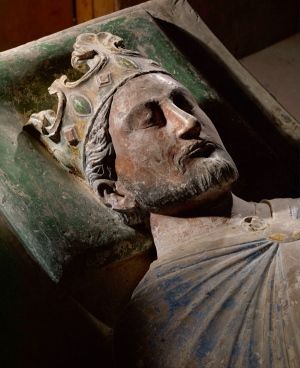 Richard’s tomb in Fontevraud Abbey in Anjou in France
Richard’s tomb in Fontevraud Abbey in Anjou in France
His heart was buried in Rouen Cathedral in Northern France
 Crusaders
Crusaders
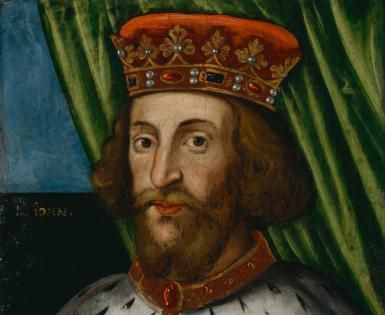 King John
King John
 In Sherwood Forest
In Sherwood Forest
 Mediaeval London Bridge
Mediaeval London Bridge
(Heads on spikes top left)


 THE SALTY SAM NEWS DESK
THE SALTY SAM NEWS DESK

This week, Miss Pringle gave her class at the Rocky Bay Primary School and interesting puzzle to do.
She divided the class into groups and told them to work as a team to solve a puzzle.
Each group was given some slips of paper and each one had a phrase written on it.
The children had to match the phrases into pairs.
They had to say whether the phrases meant the same of the opposite.
They had to explain the full meaning of the phrases in their exercise books.
There was a lot to do so they had better get their skates on and put their noses to the grindstone!
Can you solve the puzzle too?

Many hands make light work
He who hesitates is lost
Out of their depth
Only fools rush in where angels fear to tread
To be the life and soul of the party
To have a chip on one’s shoulder
Too many cooks spoil the broth
To have high self-esteem
You can’t teach an old dog new tricks
A crushing blow
Dark clouds are gathering
More fish in the sea
Every cloud has a silver lining
Has had a colourful past
Floundering
To be a shrinking violet
Their life has been nothing to write home about
A storm in a teacup
To make a bee line to
Like a fish out of water
Blow their top
As the crow flies
A snake in the grass
A slippery customer
More pebbles on the beach
Set in their ways
All at sea
Hit the roof
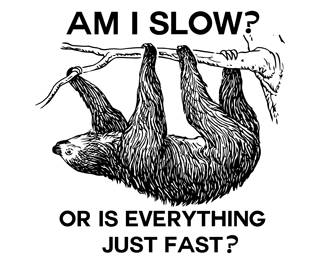

*********************
TO ADVERTISE ON THIS BLOG
PLEASE CONTACT:
christina.sinclair.ads@aol.co.uk
*********************

 Quick Quiz
Quick Quiz
What are these mediaeval things?


Used for punishment
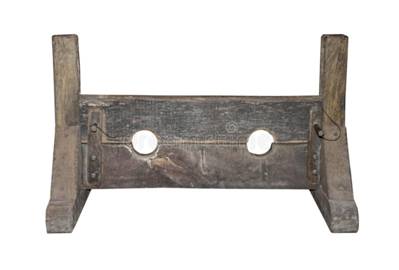
Used for punishment

Used for drinking

A weapon

The front door of a castle and the bridge over the moat
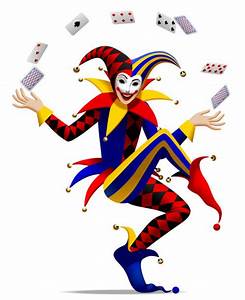
An entertainer



lt’s the Weekend!

HOW TO MAKE A LlTTLE KNlTTED WlZARD
Make sure that your wizard never does anything but good magic.
If you want to make him a couple of friends to work with, you could make them a pale green gown and a white gown to tell them apart. These colours would look nice with a purple cloak.
This purple yarn is sparkly which makes the wizard look extra magical.
Find him a magic wand if you can. This wizard has a star pendant around his neck.

FRONT (KNIT ONE)
Using 4mm knitting needles and white dk yarn cast on 10 stitches
Knit 4 rows of stocking stitch
Change to blue dk yarn
Knit 10 rows of stocking stitch
Change to pink dk yarn
Knit 6 rows of stocking stitch
Change to white dk yarn
Knit 2 rows of stocking stitch
Don’t cast off – leave a length of yarn for sewing up when you cut off your yarn and leave your stitches on this yarn
BACK (KNIT ONE)
Using 4mm knitting needles and white dk yarn cast on 10 stitches
Knit 4 rows of stocking stitch
Change to blue dk yarn
Knit 10 rows of stocking stitch
Change to white dk yarn
Knit 8 rows of stocking stitch
Don’t cast off – leave a length of yarn for sewing up when you cut off your yarn and leave your stitches on this yarn
LEGS (KNIT TWO)
Using 4mm knitting needles and pink dk yarn cast on 10 stitches
Knit 10 rows of stocking stitch
Change to black dk yarn
Knit 2 rows of stocking stitch
Don’t cast off – leave a length of yarn for sewing up when you cut off your yarn and leave your stitches on this yarn
ARMS (KNIT TWO)
Using 4mm knitting needles and blue dk yarn cast on 8 stitches
Knit 6 rows of stocking stitch
Change to pink dk yarn
Knit 2 rows of stocking stitch
Don’t cast off – leave a length of yarn for sewing up when you cut off your yarn and leave your stitches on this yarn
TO MAKE UP
- Using over-sew stitching and with right sides together sew side seams of head and body and also the arms and legs using appropriate colours
- Turn right sides out and pull tops of head, feet and hands in tight
- Stuff the body and legs with some stuffing and the ends of the yarn
- Stuff the arms with the ends of the yarn and a little stuffing
- Bind a length of pink yarn around the neck and pull in tight then secure ends and push inside the stuffing
- Bind a length of pink yarn around the wrists and pull in tight then secure ends and push inside the arms
- Bind a length of black yarn around the ankles to put straps on the slippers and pull in tight then secure ends and push inside the stuffing
- Sew the tops of the legs to the bottom of the body and the tops of the arms to the sides of the body from behind
- Sew a few stitches of white yarn onto the top corners of the face to improve the hairline contours
- Add the blue French knot eyes before or after sewing up – wrap the yarn around your yarn needle twice
GOWN (KNIT TWO)
Using 4mm knitting needles and blue dk yarn cast on 16 stitches
Knit 2 rows of garter stitch
Knit 14 rows of stocking stitch
Decrease 1 stitch at the beginning of the next 4 rows of stocking stitch
Knit 2 rows of stocking stitch
Knit 8 rows of garter stitch
Cast off
TO MAKE UP
Using over-sew stitching and with right sides together sew up shoulder and side seams
CLOAK BACK (KNIT ONE)
Using 4mm knitting needles and purple dk yarn cast on 18 stitches
Knit 6 rows of garter stitch
Knit 12 rows of stocking stitch
Decrease 1 stitch at the beginning of the next 4 rows of stocking stitch
Knit 12 rows of garter stitch
Cast off
CLOAK FRONT RIGHT (KNIT ONE)
Using 4mm knitting needles and purple dk yarn loosely cast on 7 stitches
Knit 6 rows of garter stitch
Knit 1 row
Purl 4, knit 3
Repeat the last 2 rows 5 times
Keeping the pattern of the garter stitch front edging decrease 1 stitch at the beginning of the 2nd and 4th rows
Knit 12 rows of garter stitch
Cast off
CLOAK FRONT LEFT (KNIT ONE)
Using 4mm knitting needles and purple dk yarn loosely cast on 7 stitches
Knit 6 rows of garter stitch
Knit 1 row
Knit 3, purl 4
Repeat the last 2 rows 5 times
Keeping the pattern of the garter stitch front edging decrease 1 stitch at the end of the 2nd and 4th rows
Knit 12 rows of garter stitch
Cast off
TO MAKE UP
Using over-sew stitching and with right sides together sew up shoulder and side seams
HAT (KNIT ONE)
Using 4mm knitting needles and purple dk yarn cast on 10 stitches
Knit 1 row
Knit 1 row
Continue working in stocking stitch
Decrease 1 stitch at the beginning of every row until 1 stitch remains
Cast off
Cut your yarn off leaving enough for sewing up
HAT BRIM (MAKE ONE)
Crochet 23 chains into a length double length of purple yarn
TO MAKE UP
With wrong sides together using over-sew stitching to sew up side seams
Attach the brim to the base of the wizard hat



Please note that the material on this blog is for personal use and for use in classrooms only.
It is a copyright infringement and, therefore, illegal under international law to sell items made with these patterns.
Use of the toys and projects is at your own risk.
©Christina Sinclair Designs 2015

Answers to the News Desk Quiz
OPPOSITE MEANINGS
Many hands make light work/too many cooks spoil the broth – a lot of people helping makes a task easier/a lot of people helping with a task ruins the outcome
He who hesitates is lost/only fools rush in where angels fear to tread – if someone delays doing something, they can miss out on something/if someone rushes in too quickly they could get themselves into trouble or danger
To be the life and soul of the party/to be a shrinking violet – to be very lively and sociable/to be shy and retiring
To have a chip on one’s shoulder/to have high self-esteem – to think the world is against you/to have faith in your own worth and abilities
A storm in a teacup/a crushing blow – a situation that seems to be a problem but calms down into something of little consequence/a situation that is serious
Dark clouds are gathering/every cloud has a silver lining – there is evidence of problems coming up in the future/a good thing has come out of a bad situation (clouds have bright edges when the sun is behind them)
They have had a colourful past/their life has been nothing to write home about – their past life is full of exceptional circumstances and their behaviour may not have been very good at times/their experiences have been of no note, that is to say they have not really ever done anything very interesting
SAME MEANINGS
To make a bee line to/as the crow flies – to go directly to a place
A snake in the grass/a slippery customer – a person not to be trusted
More fish in the sea/more pebbles on the beach – when you lose a girlfriend or boyfriend you can find another one
You can’t teach an old dog new tricks/set in one’s ways – some people don’t want to learn new things or change the way they live their life
All at sea/like a fish out of water – being at a loss to know what to do, feeling mentally uncomfortable or not fitting in with a group of people
Hit the roof/blow one’s top – losing one’s temper
Floundering/out of one’s depth – not being able to cope with a situation



Quick Quiz Answers
- a pillory
- stocks
- a goblet
- a flail
- a portcullis
- a drawbridge – a moat was the body of water around a castle put there for added protection
- a jester
 Pillory and stocks
Pillory and stocks
 A drawbridge
A drawbridge
 A drawbridge across a moat could be pulled up to seal the castle
A drawbridge across a moat could be pulled up to seal the castle
 Mediaeval houses were often cantilevered
Mediaeval houses were often cantilevered
This means the top floor was bigger than the bottom

Embroidery Stitches



